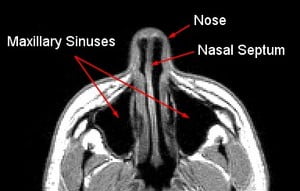A cyst is a general term for a fluid-filled sack that forms on an organ or part of the body. Cysts can be harmless, or filled with a wide variety of bacteria and nastiness. For reasons that are not well understood, the kidneys are particularly susceptible to growing cysts, especially as a person gets older. But exactly how common are kidney cysts. The answer in one word is, “very”.
The kidneys are primarily responsible for filtering the blood and maintaining a proper balance of water and electrolytes in the body. As you are likely aware, a person typically has two kidneys, located on their flanks, just about where the rib cage tapers off.
As a person ages, the kidneys have a propensity to grow cysts. These cysts usually have a thin wall and are filled with a very watery fluid. It should be noted that the fluid in a cyst is not pure water however – it contains a wide variety of chemicals that have been passing through the kidney.
No one is really sure exactly why these cysts form. With the exception of one genetic condition which I will discuss momentarily, there are no known risk factors for developing kidney cysts.
It is estimated that over half of the population over the age of about 50 has at least one small kidney cyst. This number is hard to establish with a great deal of certainty as a vast majority of kidney cysts have no symptoms and cause the person no harm whatsoever.
Most kidney cysts are discovered when a person is being evaluated for something else. Most of the time they are found when some sort of imaging of the abdomen is done – such as a CT, MRI, or ultrasound.
There is one condition which can predispose a person to developing kidney cysts. This is a genetic disorder known as polycystic kidney disease. There are several genetic mutation which have been identified that can lead to this condition. People with PKD will develop a massive number of very large cysts on their kidneys, usually starting in the 4th or 5 decade of life.
PKD is a serious disorder as the kidney cysts become so numerous and large that the function of the kidney is impaired. There are no real definitive treatments to removing these cysts – surgically draining them doesn’t really work because they will simply grow back. A kidney transplant from a healthy donor will work, but extra kidneys are in short supply.
Interestingly, despite not being very well know to the average person, PKD is the most commonly inherited genetic disorder. It is estimated that about 600,000 to 700,000 people are effected by one form of the disorder in America alone. Worldwide the numbers are even more staggering – over 13,000,000 are estimated to carry one of these mutations. There are no known associations with the defect to gender or race.


